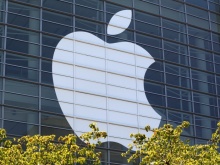'ZDNET Recommends': What exactly does it mean?
ZDNET's recommendations are based on many hours of testing, research, and comparison shopping. We gather data from the best available sources, including vendor and retailer listings as well as other relevant and independent reviews sites. And we pore over customer reviews to find out what matters to real people who already own and use the products and services we’re assessing.
When you click through from our site to a retailer and buy a product or service, we may earn affiliate commissions. This helps support our work, but does not affect what we cover or how, and it does not affect the price you pay. Neither ZDNET nor the author are compensated for these independent reviews. Indeed, we follow strict guidelines that ensure our editorial content is never influenced by advertisers.
ZDNET's editorial team writes on behalf of you, our reader. Our goal is to deliver the most accurate information and the most knowledgeable advice possible in order to help you make smarter buying decisions on tech gear and a wide array of products and services. Our editors thoroughly review and fact-check every article to ensure that our content meets the highest standards. If we have made an error or published misleading information, we will correct or clarify the article. If you see inaccuracies in our content, please report the mistake via this form.
Apple iPod (30GB)


Apple iPod (30GB)
pros and cons
Design
This is simply the best-designed MP3 player we've seen to date. And it's currently the smallest hard-drive-based player in the world (the old iPod comes in second), measuring 10.4cm by 6.1cm by 1.85cm. Due to the higher-capacity hard drive, this 30GB version weighs 17.6g more than the other new models, but at 176g, it's still about 9g lighter than the old iPod. With its rounded edges and small size, the new iPod is even more pocket-friendly and aesthetically pleasing than its predecessor.
The bluish-white backlit display measures 2in. diagonally and has a higher resolution (160 by 128 pixels), allowing crisper graphics. The scroll-wheel on the lower half of the device balances the display visually. Unlike the earlier iPod scroll-wheels, it does not spin. In fact, the player's only moving parts are the sliding Hold switch on the top and the hard drive inside the case. The scroll-wheel features the same accelerated scrolling of the previous models, so we were able to whip through several thousand tunes in mere seconds and manoeuvre with precision between individual songs. An unlabelled multi-function button in the middle of the scroll-wheel typically acts as the select control.
Between the display and the scroll-wheel are four buttons: Rewind, Menu (which also moves you up one level during navigation), Play/Pause/Power and Fast-Forward, all of which are reachable with your thumb when you're holding the device. You can turn off their orange backlighting (along with the display backlighting) to save power, or set it to turn on when you touch a button. All six front-panel controls are incredibly touch-sensitive -- they almost seem to respond to heat rather than pressure. Luckily, the Hold switch prevents accidental activation.
Unlike the earlier iPod, which featured a standard FireWire port on top, the new iPod has a slot on its underside for connection to a proprietary cable or a docking station (a slot protector is included). The device comes with a FireWire cable, and for Windows users without a FireWire port, a £15 USB 1.1/2.0 kit is slated to be available in June (Windows only).
The 15GB and 30GB versions ship with a remote control, a docking cradle and a case. The remote is the same one the older models had; it securely clips to fabric or bag straps using a spring-loaded rocker mechanism. The control connects to the device via both a normal headphone jack and another small jack for remote commands. This design solves the problem some earlier iPods had with their headphone/remote connections, which could be compromised by sharp impact.
The cradle positions the player at an angle. It includes a line-out jack for direct connection to a stereo, bypassing the iPod's volume circuitry (which, as any audiophile will tell you, degrades sound ever so slightly). Cables attach to the iPod either directly or through the cradle, so you can still connect the player to a computer if you leave the cradle at home.
Features
The iPod's playback features are all accessible and programmable from the main menu. You can browse by song, artist, album, genre, playlist or composer. And the On The Go function -- our favourite addition -- enables you to create a new playlist even when the iPod isn't attached to a computer.
A new smart-playlist function lets you rate a song while it's playing. Rating is on a scale of 1 to 5 stars; higher-rated songs play more frequently during shuffle. If you're on a Mac, you can also rate songs from within iTunes. MusicMatch users don't have this rating system, so they'll have to wait for the expected Windows version of iTunes. One more great playlist feature: you can set which playlists update from iTunes (Mac) or MusicMatch (Windows) -- a nice combination of convenience and control.
Speaking of synchronisation, this iPod integrates better with MusicMatch than its predecessor did. Once you drop the device into its cradle, MusicMatch starts up almost as quickly as iTunes does for Mac users, and if you like, it can automatically sync the iPod to your music collection. Both iTunes and MusicMatch can create AAC files from your CDs. The iPod handles them like MP3 files, but the AAC files sound better at the same bit rate. The player also supports WAV/AIFF and spoken-word Audible files. The applications can resample songs to a certain bit rate, apply volume leveling (also known as normalisation), and digitally enhance songs while transferring them.
Some people want to use the iPod to share music between multiple computers. You can, but it's not easy. Synchronising to MusicMatch or iTunes is possible with only one machine. But there is an unattractive alternative. We were able to copy MP3 files from the iPod to a second computer's hard drive by turning on ‘View hidden files and folders’ and browsing the iPod's internal directories in My Computer until we found the music. Mac users can do the same thing if they install ResEdit. However, when we reconnected the iPod to the primary machine, the device wouldn't mount as a drive or connect to MusicMatch until we reset it.
On the other hand, the iPod has no problem transporting data files between computers (Macs or PCs) when you activate Enable FireWire Disk. In this approach, the iPod mounts as a data drive, but it hides music files in the default mode.
Although Apple makes no mention of it, the new iPod can record line-in audio -- in mono via the headphone jack, and in stereo via the jack on the cradle. However, you can record for only 6 seconds at a time. Apple might add this recording feature in earnest later with a firmware update, but could not comment on that possibility.
Three more extra treats, including an alarm clock that can beep or play the song of your choice through a home stereo, three games (Brick, Parachute, and Solitaire) and the ability to play tunes from the iPod's hard drive while it's connected to your computer (so you can delete your music collection from your computer's drive to free up space).
Performance
The new iPod sounds great -- Apple won't release the signal-to-noise ratio, but our ears peg it at more than 90dB. It's more than loud enough, even through our large test headphones, outputting 30mW per channel. The sound is even cleaner coming through the cradle's line-out jack, which bypasses the device's volume circuitry.
Apple claims the internal Li-ion battery will last 8 hours, but that's with the button backlighting and the EQ turned off and the volume limited to 50 percent. With heavy use, involving lots of backlighting and On The Go playlist creation, our test unit lasted about 6 hours. However, Apple has solved the old iPod's battery problem (the life of the non-replaceable battery dropped to 1 to 3 hours after about a year of use) with an included firmware upgrade. The battery charges in about 2 hours and 40 minutes, with or without the cradle, from a FireWire port or the square white AC wall adapter that comes with the iPod.
MP3 files transferred over FireWire at around 3.3MB per second from Macs and Windows machines, meaning that you can fill all 10GB in less than an hour.